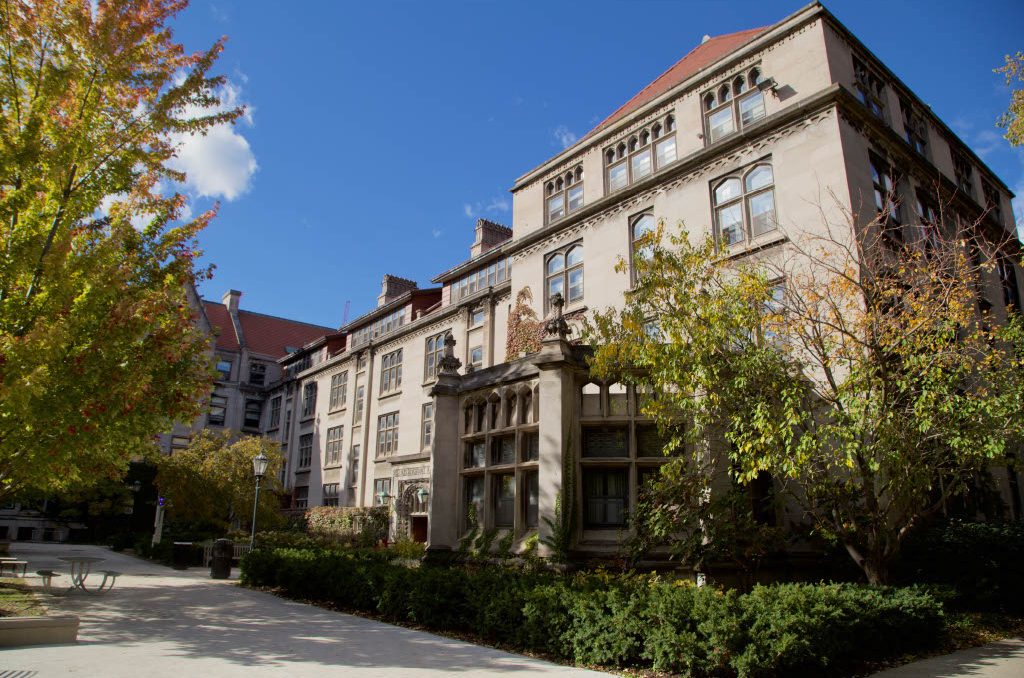Why does Hyde Park scare you?
You might think it doesn’t scare you in the first place, but if you aren’t willing to walk to Walgreens at 3 a.m. alone, I would guess that it probably does, at least on some level. The crucial question, then, is why. I think that there are two important factors here.
The first is race. The lengths to which some people will go to avoid discussing this incredibly obvious phenomenon are pretty remarkable. We cannot skirt the obvious: Some students are afraid of black people. In an article published in the Maroon in October, Angela Bailey, a student at the University’s School of Social Administration, is reported as saying that she wanted to begin a campaign to create a safer Hyde Park. She received several responses from people “basically saying that they’re afraid of people of color.” But that’s their problem: Black people aren’t going anywhere anytime soon. If we are to make students feel safer, we’ll have to look elsewhere.
Race is, I think, a lesser issue. Mostly, it’s the lack of foot traffic: Hyde Park seems desolate nearly all the time. I regularly walk back and forth between Broadview and the University; though I vary my route, there are often few or no people within a block of me. Why is there so little foot traffic in Hyde Park?
Brian Shaw, the University’s director of transportation and parking, told me that foot traffic is “primarily a condition of the [population] density in the neighborhood,” and that Hyde Park is “far less” dense than the rest of Chicago. And Bob Mason of the University Police seems to agree. He says that many of Hyde Park’s streets are “nearly deserted” at night, and while he concedes that more people “keep the street safer,” he argues that providing free buses and shuttles is the best way to help students. (Mason also adds that violent crime decreased in 2008. However, because so many other policies designed to improve safety have been implemented, and because total violent crime has been steadily decreasing in Hyde Park–South Kenwood since 1996, it is exceedingly difficult to say anything about the effect of busing on crime in Hyde Park without very careful statistical analysis.)
He’s absolutely right, of course. But it’s important to realize something here: Buses and shuttles are, in Bailey’s words, only “Band-Aids” and do not address the principal concern. They may make students safer, but they certainly do not make the neighborhood safer. In fact, I’d like to suggest that they do the reverse. Buses and shuttles serve to lower the foot traffic in Hyde Park. When a bus packed like a can of sardines departs from the University for the Shoreland with dozens of people onboard, it removes those people from the streets. Ask yourself why campus feels so safe. The answer is that it’s flooded with people—only very rarely are you alone. If those people were patrolling the entire Hyde Park area, then things would undoubtedly feel much nicer. Hyde Park is indeed less densely populated than other neighborhoods, but because there are students being forced to walk around, campus normally feels quite safe.
The University likes to talk about expanding bus service, but doing so only partially exempts students from a genuine problem. It induces a terrible sort of apathy. To us, the University is a safe, idealized plane of existence insulated from some nightmarishly chthonic neighborhood—the less we have to walk, the better. We really couldn’t care less about how the neighborhood’s faring because we’re not in the neighborhood.
This is no way to live. Here’s what I suggest: Improve the safety of the neighborhood by getting rid of the daytime shuttles and making people pay for the 171. If people had to walk from campus to their dorms, there would be more foot traffic and consequently more neighborhood safety. (I don’t enjoy using the word “had” here; we have a “choice” only because of handsome CTA subsidies. No one would be “forced” to walk—this kind of “have” is the “have” of having to work for a living, of having to make real choices and confront real trade-offs.) Students will also be forced to confront the issue of neighborhood safety. In effect, they will be forced to care.
“Oh, come on,” you cry. “The only thing that’ll lead to is more students being mugged.” Maybe, but the increase will be commensurate with an increase in foot traffic; i.e., it could be that for every additional student mugged, one potential mugger will be scared away by passersby. Crime is not as severe in Hyde Park as it is in other neighborhoods, but increasing foot traffic will always perceptibly increase safety.
But what if my ratio’s incorrect? What if the ratio of muggings caused to muggings prevented is actually 2:1? Understand that the University would surely save a bundle of money, which it could spend on giving financial incentives to businesses to stay open late. This would improve safety still further—it would reinforce the desire of students to walk, and walking would reinforce the desire of businesses to stay open late. Hopefully, the incentives would induce a cascading wave of safety that would ultimately result in an ability to venture out to Walgreens at night. (It’d make students fitter and the 171 significantly less crowded, too.) Busing only insulates students from the problem while making it worse.







